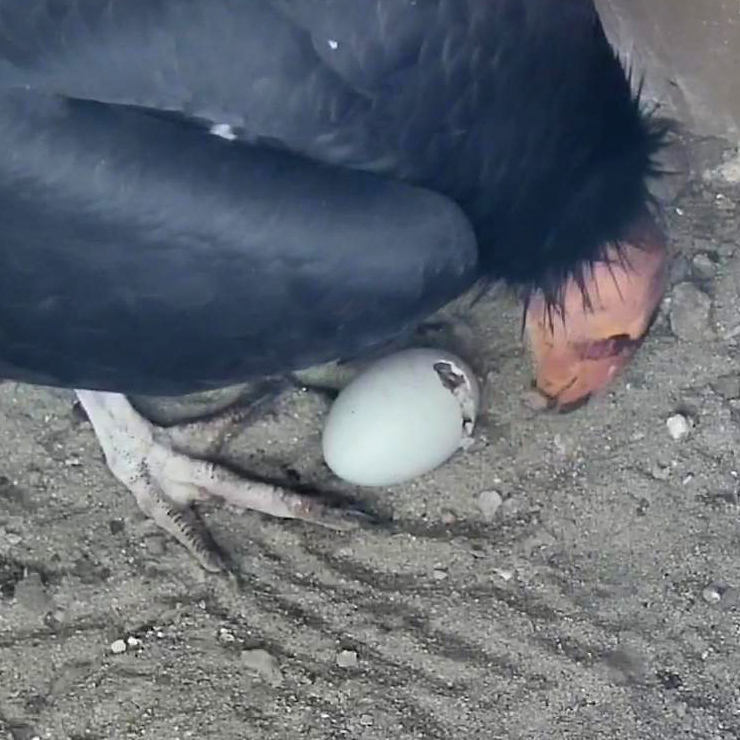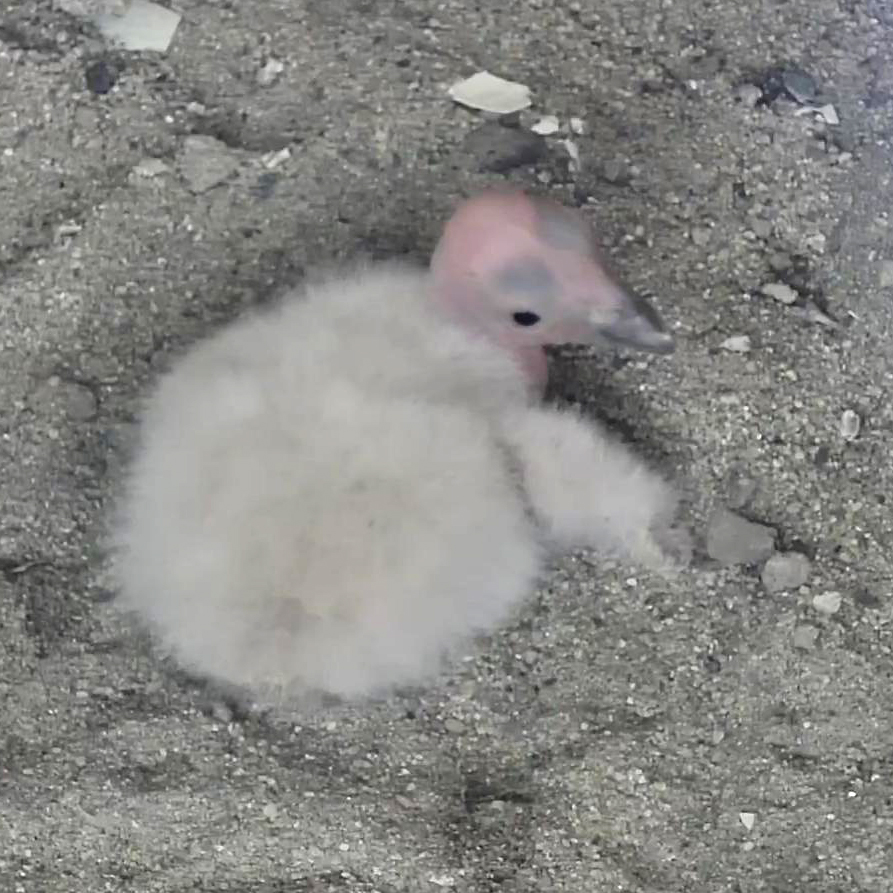
Keep your eye on the San Diego Zoo Safari Park’s Condor Cam. Male Susil (“SOO-sil,” identified by his blue “67” wing tags) and female Antiki (“an-TEE-key,” without wing tags) are currently caring for a chick that hatched Saturday, March 18.
The chick that Susil and Antiki are caring for is actually not their own. In fact, this is their third foster chick. Wildlife care specialists at the California condor breeding center often replace a condor pair’s egg with a replica that looks and feels just like the real one. (We make sure the birds don’t see us make this switch, so they don’t know the egg they are incubating isn’t actually their real egg.) Because every California condor egg is precious, we put the real egg into an incubator that keeps the temperature and humidity at optimum levels for condor eggs, so we can closely track the chick’s development and determine if it might need help with hatching. Once an egg pips, we make the swap back, and the condors sit on the real egg until it hatches.
This particular chick is the offspring of another well-known pair, Sisquoc and Shatash (who you might remember from our CondorCam in years past). Sisquoc and Shatash have been paired for almost 30 years and have raised many chicks together, including our current CondorCam foster mom Antiki (which means the chick Antiki is raising is her sibling!)


Some condor genes are underrepresented in the population, so their eggs are particularly important. For these birds, we encourage the female to double-clutch (lay a second egg). When we remove the first egg, we don’t replace it with a replica. Birds commonly lose eggs in their native habitats due to breakage, predation, or other reasons, so it isn’t too unusual for them to come back and find their egg missing. Under these circumstances, a female will often lay a second egg about 30 days later. While a condor pair raises just one chick at a time, we can have another pair foster-rear the first chick, or we can puppet-raise the chick ourselves. (Check out the Safari Park’s social media pages for some cute videos of our puppet-raised chicks!)
Antiki hatched live on CondorCam in April 2015, so if you’ve been a long-time dedicated viewer, you may remember her. You also may have seen Antiki when she lived in the Safari Park’s Condor Ridge habitat. Antiki was matched with Susil in 2019, and they raised their first chick together (and first chick ever, for Antiki) in 2021. Once she figured out how to sit on an egg properly, Antiki has done great with all her motherly duties. She’s a natural mom!
Check in on our Condor Cam regularly over the next few months, to watch this chick grow, and keep up to date on all the developments!
As a wildlife care specialist at the San Diego Zoo Safari Park, Kenzie Swing works to conserve California condors.




